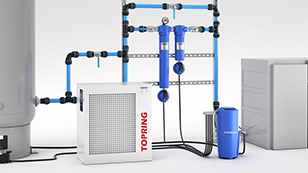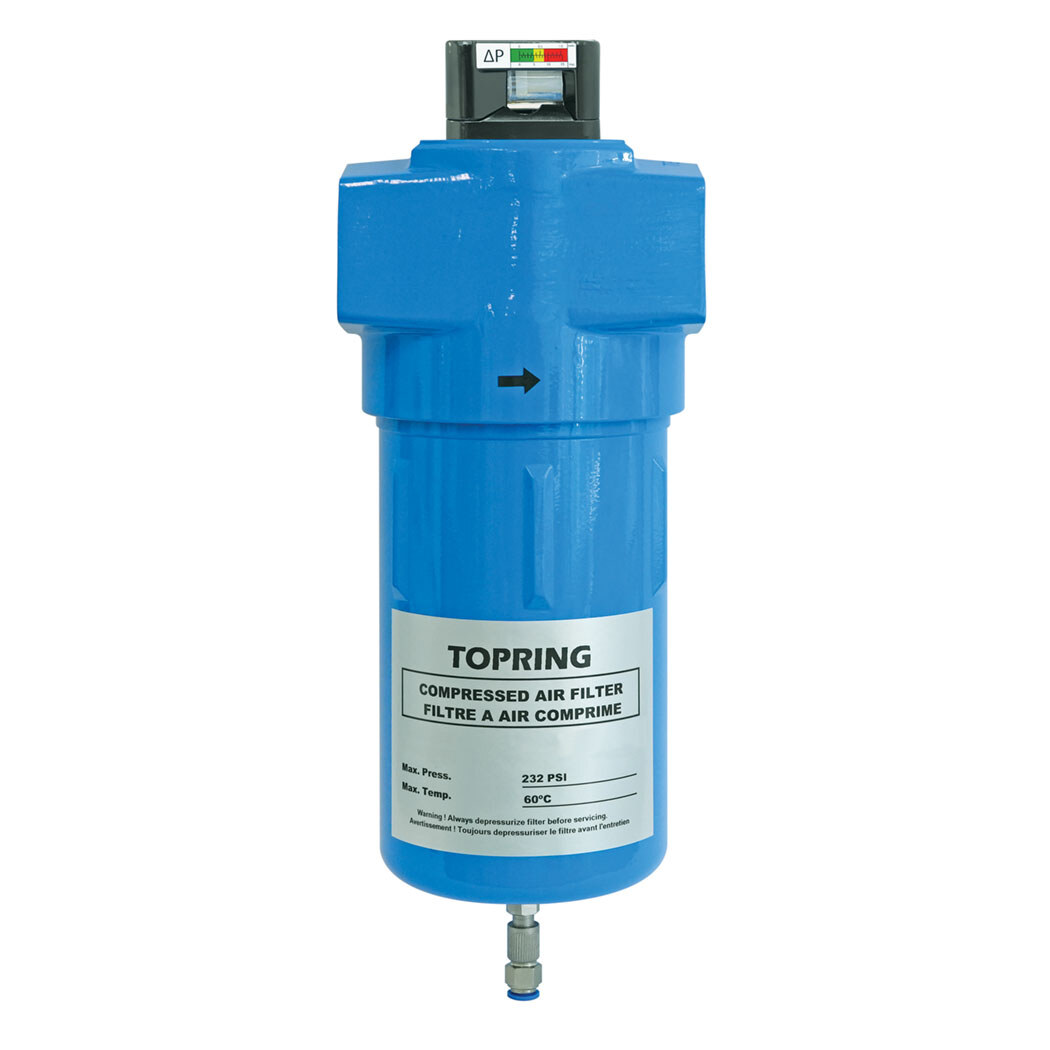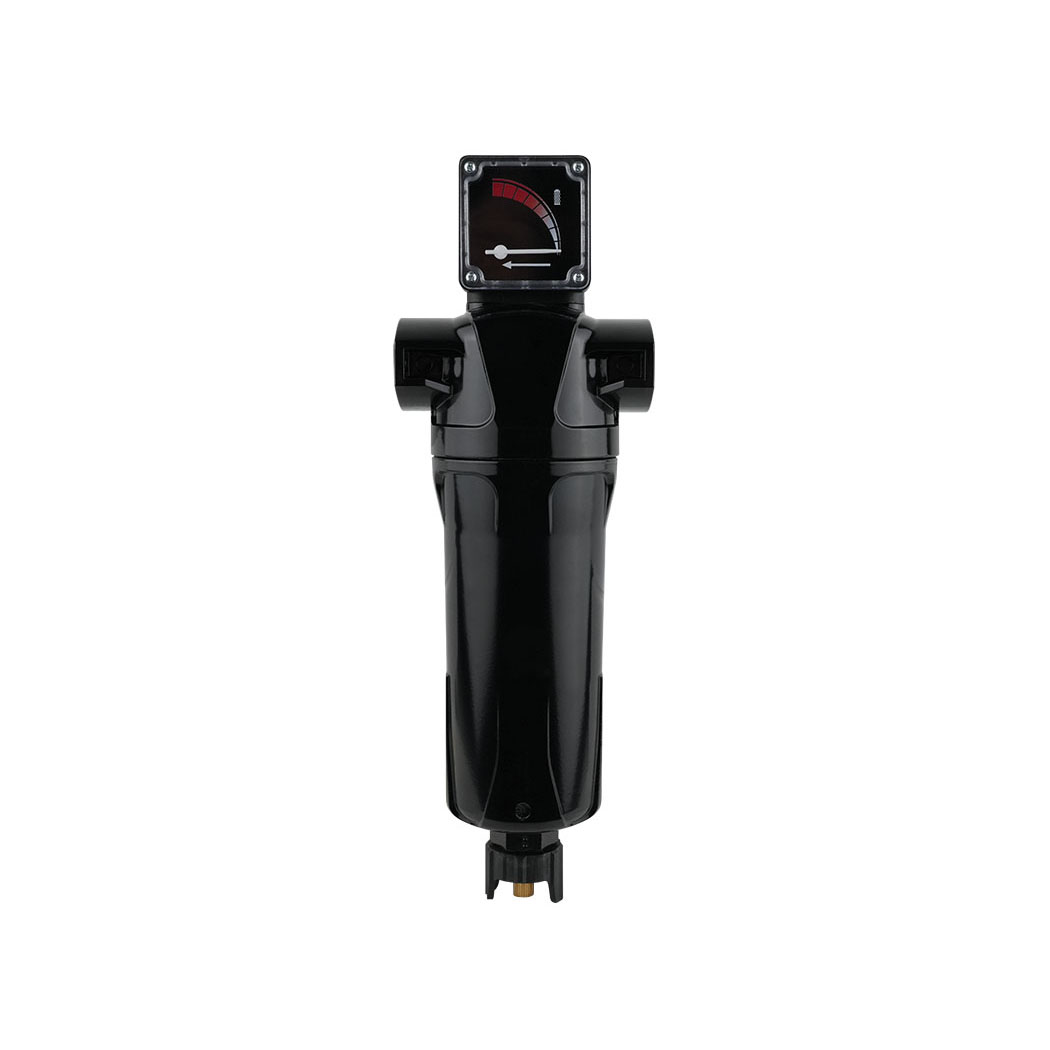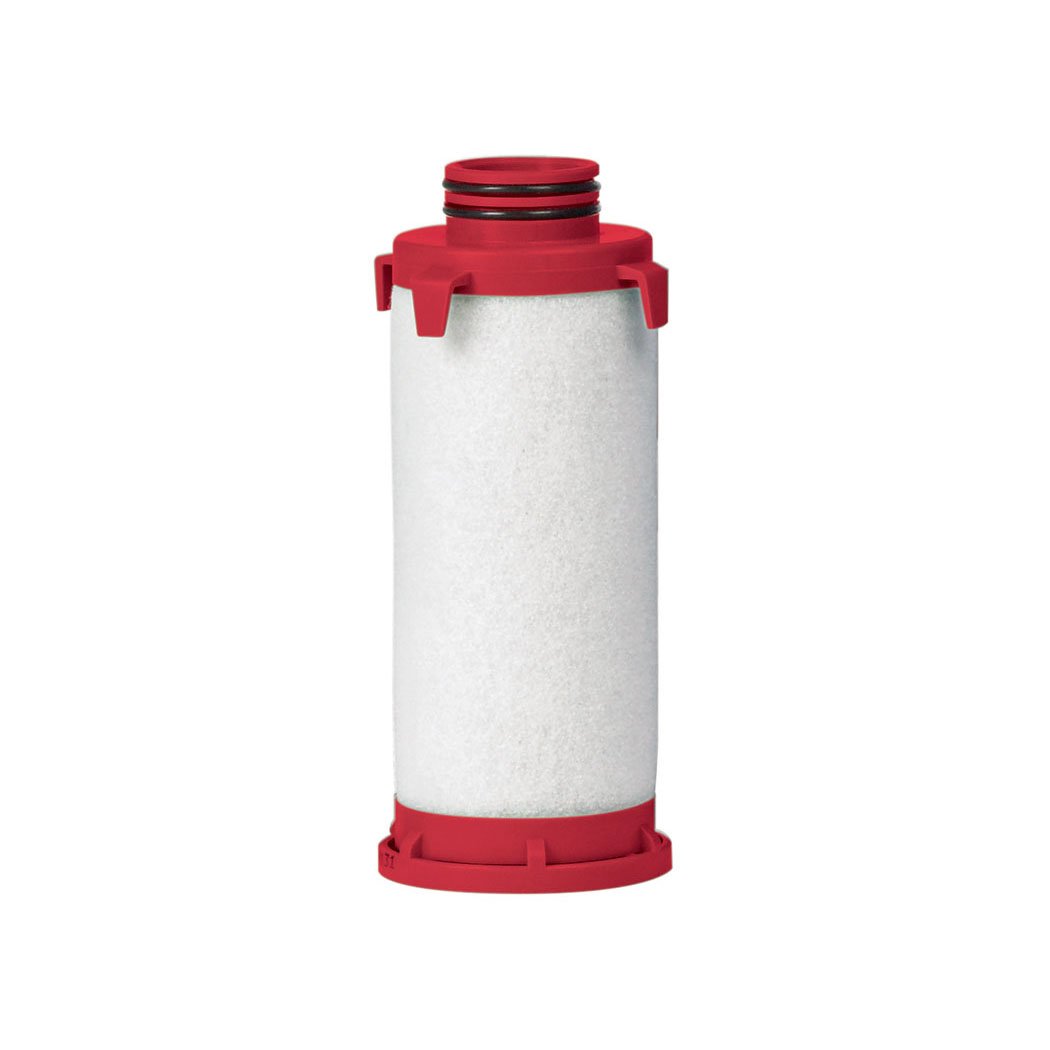Filtres

- …
Choisir les bons filtres à air comprimé pour les salles de compression
Les filtres à air des compresseurs sont des composants indispensables des systèmes d'air comprimé. Ils garantissent la pureté et la qualité de l'air comprimé fourni. Ils éliminent principalement les contaminants, tels que l'huile, la vapeur d'eau, la saleté et d'autres particules, du flux d'air comprimé.
Voici un guide d'achat complet des filtres à air comprimé destinés aux salles des compresseurs :
Chez Topring, nous proposons deux types de filtres pour la salle des compresseurs, avec différents niveaux de filtration en microns :
Les filtres à particules
Conçus pour éliminer les particules solides telles que la poussière, la rouille et d'autres débris de l'air comprimé. Ils utilisent généralement du papier, du polyester ou d'autres matériaux fibreux pour piéger les particules de différentes tailles.
Filtration M5 :
- Filtration des poussières à usage général
- Élimination des particules jusqu'à 5 microns
Applications : Air comprimé sans spécifications
Filtration M3 :
- Pour une préfiltration grossière
- Élimination des particules jusqu'à 3 microns
Applications : Air comprimé sans spécifications
Filtration M1 :
- Pour la filtration générale
- Élimination des particules jusqu'à 1 micron
- Teneur maximale en huile résiduelle (aérosol) : 0,1 mg/m3 à 20 °C
Applications : Air d'atelier général, outils pneumatiques, sablage, meulage
Filtration M01 :
- Pour une filtration haute performance
- Élimination des particules jusqu'à 0,01 micron
- Teneur maximale en huile résiduelle (aérosol) : 0,01 mg/m3 à 20 °C
Applications : Instruments de mesure de l'air, peinture par pulvérisation
Filtres à charbon activé
Les filtres à charbon actif éliminent efficacement les odeurs et les vapeurs de l'air comprimé. Ils fonctionnent en adsorbant les contaminants gazeux sur la surface des particules de carbone.
Filtration AC :
- Filtre à charbon actif applicable aux compresseurs lubrifiés à l'huile.
- Pour l'élimination, de la teneur en huile jusqu'à 0,003 mg/m3 à 20 °C, en association avec le filtre M01.
Applications : Transformation alimentaire/boissons, produits pharmaceutiques, laboratoires, produits chimiques
Comprendre vos besoins :
Avant d'acheter des filtres à air comprimé, évaluez vos besoins spécifiques. Prenez en compte des facteurs tels que le type de contaminants présents dans l'air, les niveaux de pureté de l'air requis, le débit, la pression et la température de l'air comprimé.
Identifier les contaminants :
Déterminez les types de contaminants que vous devez éliminer de l'air comprimé. Les polluants les plus courants sont les aérosols d'huile, la vapeur d'eau, la poussière, la saleté, la rouille et les micro-organismes. Identifiez les filtres qui conviennent pour éliminer efficacement ces contaminants. Consultez le catalogue en ligne (#18) GR1-S53-P2 - P4 pour obtenir un tableau de référence des classes de qualité de l'air selon la norme ISO, ainsi qu'un diagramme de configuration de filtration typique par niveau de qualité de l'air. Cela vous aidera à déterminer le type de filtre et le niveau de micron requis pour votre application spécifique.
Dimensionnement et capacité :
Veillez à ce que les filtres sélectionnés soient correctement dimensionnés pour traiter le débit et la pression de votre système d'air comprimé. Tenez compte de la taille nominale de l'entrée, de la capacité du filtre et des pertes de charge pour éviter les goulots d'étranglement et garantir un fonctionnement efficace.
Type de purgeur :
Bien que ces filtres (à l'exception du filtre à charbon actif) soient livrés avec des purges automatiques, une salle de compresseur contient beaucoup de condensat ; l'ajout d'une purge externe serait donc bénéfique.
Mécanique (automatique) :
- Environnements éloignés ou difficiles où l'électronique est vulnérable ou l'alimentation limitée.
- Il est idéal pour les applications industrielles générales avec une faible production de condensat et des critères de perte d'air moins stricts.
- Conviens aux descentes de gouttières dépourvues d'alimentation électrique.
Sans perte d'air (automatique) :
- Ce système est bien adapté à l'accumulation rapide de condensats dans les systèmes d'air comprimé à haut volume.
- Il est idéal pour les applications critiques et les industries qui accordent la priorité à l'efficacité énergétique ou aux processus sensibles.
- Il assure une vidange fréquente sans gaspiller d'air comprimé.





